Cemetery ban: Township and couple clash over green burial project
BROOKS TOWNSHIP, Mich. (WOOD) — A West Michigan couple is suing Brooks Township near Newaygo after it passed a ban on new cemeteries.
Peter and Annica Quakenbush have been working to bring a green conservation cemetery to Michigan for a few years. In a green burial, a body is not embalmed and is buried in a casket or shroud that is biodegradable, rather than inside a metal vault. A conservational cemetery protects the land and keeps it natural.
Peter Quakenbush had heard about green burials when he read “The Hidden Life of Trees” by Peter Wohlleben, a forester in Germany.
“They take care of one of their forests by letting people be buried there,” Peter Quakenbush explained. “So instead of having to cut down the trees and extract the value that way, let people be buried there and it is far more valuable in that way. So that was a beautiful concept that I felt like I could bring to Michigan.”
According to the state, Michigan law does not require a body be embalmed in most circumstances, but a body typically cannot be transported more than 48 hours after death unless it has been embalmed.
The couple set out to start Michigan’s first green conservation cemetery, hoping to create a space that was both a cemetery and a nature preserve. They wanted to find a property that was somewhat close to Grand Rapids, could be accessed in the winter and was big enough for the Green Burial Council. They also wanted land that had a community of native flora and fauna. It took them some time to find land that was within their price range and checked all the boxes.
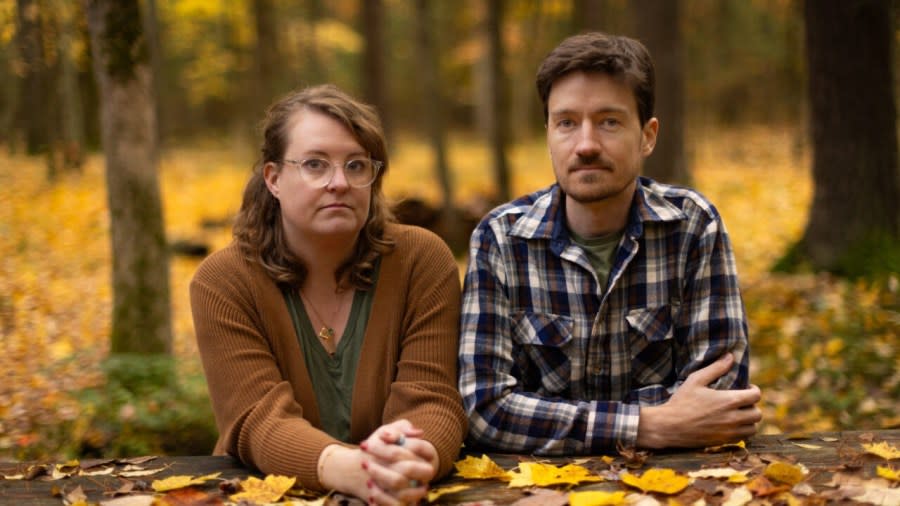
“There’s a lot of available properties that are swamps,” Annica Quakenbush said. “It needed to be a dry plot of land where we could actually do what we want to do.”
About two years ago, they bought property in Brooks Township, located along 72nd Street near Spruce Avenue. The 20 acres is all forest, and they plan on keeping it that way.
The project had “overwhelming support,” the couple says. The West Michigan Burial Forest has a growing waitlist, which their attorney says has hundreds of people. The Quakenbushes didn’t market the project, aside from an occasional social media post. They say people learned about it mostly by word of mouth or Google searches.
“We’ve been shocked by how many people know about it and how much momentum there has been and how much support that we’ve gotten just from simply existing,” Annica Quakenbush said.
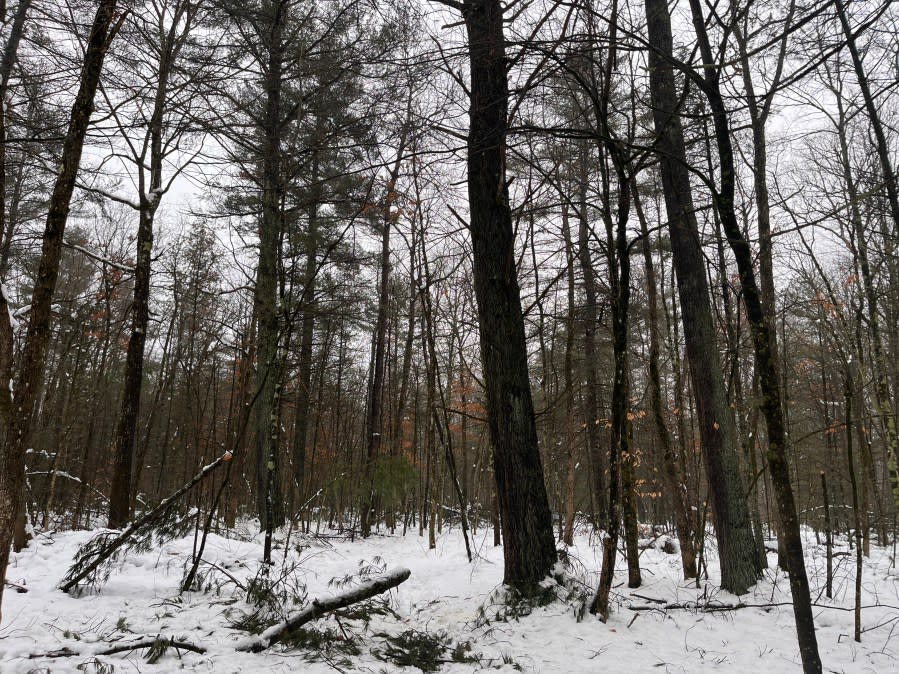
CEMETERY BAN
The couple and their attorney say after buying the land, they approached the township about what they needed to do.
“We were given a list of things to fulfill that would help the township feel better about entertaining our proposal, and one of those was establishing a relationship with the Land Conservancy,” Peter Quakenbush said. “That type of relationship takes a long time. And we have been working on that and we have gotten to that point.”
Katrin Marquez, an attorney at Institute for Justice, which is representing the couple, says they complied with all the requirements. They also got approval from the health department, and are working towards getting certification from the Green Burial Council and getting an easement donated to them from a conservation group.
Marquez says a “small group of activists” who she described as “very influential in the town” advocated against the cemetery.
According to the lawsuit, some were concerned about water contamination. The suit refuted that concern by saying that all gravesites will be more than 1,100 feet away from the Muskegon River and more than 250 feet from the closest Newaygo city wells. Peter Quakenbush said the health department cleared water contamination concerns, and the soil will act as a natural filter.
Another concern is parking. While around 18 cars were parked along the street during an August 2023 “forest bathing” event, the lawsuit says, site plans include a circle drive with 26 parking spots.
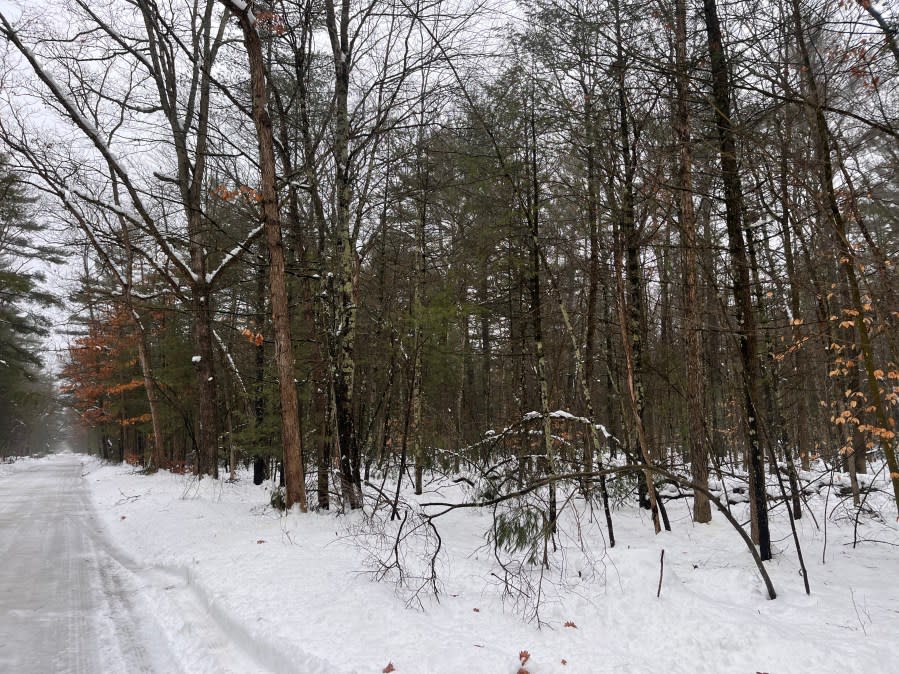
At a June 20 meeting, the Brooks Township Board passed an ordinance banning any new cemeteries. Minutes from that meeting say two people spoke in support of the ordinance during public comment. According to the lawsuit, a neighbor said they were concerned about the proximity to the Muskegon River and Newaygo City’s water supply.
Later, township supervisor and board’s chairman, Cory Nelson, provided background on the ordinance during the meeting.
“The ordinance is designed to protect public health, safety and general welfare by prohibiting cemeteries,” the meeting’s minutes say.
The ordinance passed unanimously.
ATTORNEY: ORDINANCE UNCONSTITUTIONAL
Katrin Marquez, an attorney at Institute for Justice, which is representing the couple, says the cemetery ordinance was targeted at the couple.
“That’s not just wrong, but it’s also unconstitutional,” she said. “The Michigan Constitution doesn’t allow a municipality to use targeted zoning just to prevent someone from opening a business because they think it’s weird.”
She said the couple was not included in the township’s discussions.
The Quakenbushes say they thought the township was just waiting for them to finalize a conservancy commitment.
“We were waiting — and were very close — to having what we needed to come back to the township and officially make our proposal for the special use permit based on the zoning that we’re in,” Annica Quakenbush said. “Weeks before we were ready to do that, we received a letter that a couple months prior there had been an ordinance passed … that we were not told about. So that was really devastating.”
In an email to News 8, Brooks Township Supervisor Cory Nelson declined to comment on the case, citing the ongoing legal matter.
“Although I have alot to say on behalf of the people of Brooks Township it will have to wait,” he wrote.

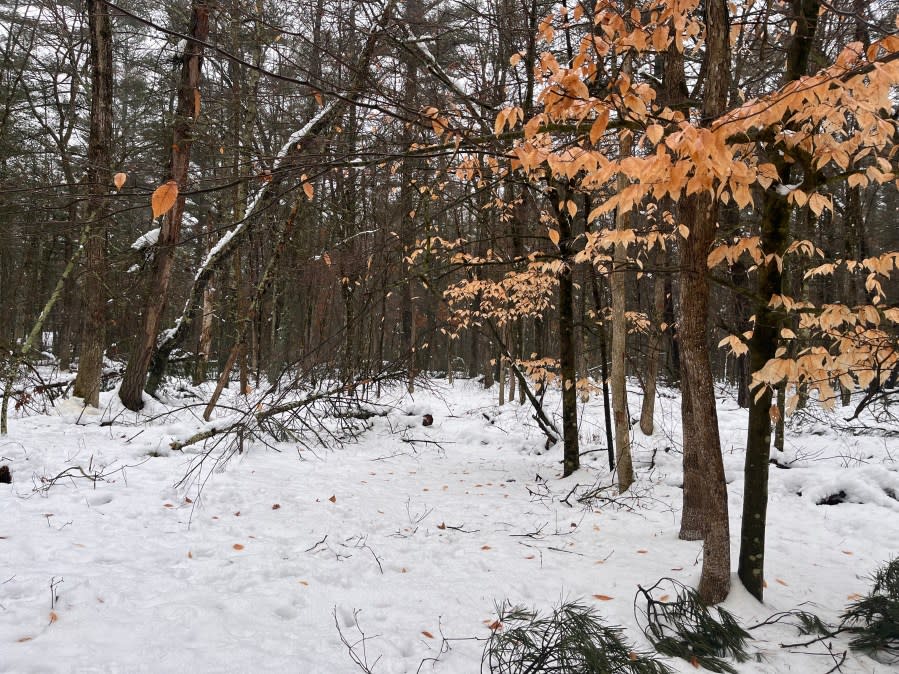
LAWSUIT ‘SURREAL’
Having to file a lawsuit has brought “mixed emotion,” the couple says. They were hoping to depend on the project financially soon because they were getting ready to sell plots.
“It feels kind of surreal,” Annica Quakenbush said. “This is not what we wanted. We wanted to be able to work amicably with the township and work in partnership with them to bring this. … It’s not the way that we wanted it to be, but we also feel strongly that what they did was not constitutional.”
She said they also feel “overwhelmingly supported.”
“As people have learned more about our story and learned how we were specifically targeted with this ordinance,” she said. “There’s been a lot of support and that has been really wonderful and affirming that this is certainly something people want and we are going to keep working to bring it.”
They say they are confident they will be successful.
“Victory in this case will reaffirm that a local government can’t use targeted zoning to stop people from using their own property to operate a legitimate business here,” Marquez said. “It’s very clear that the cemetery ordinance was passed to target Peter and Annica to prevent them from building their cemetery, just because some people thought it was a little bit weird or a little bit creepy. That is not a basis on which one can ban a legitimate land use, which this is.”
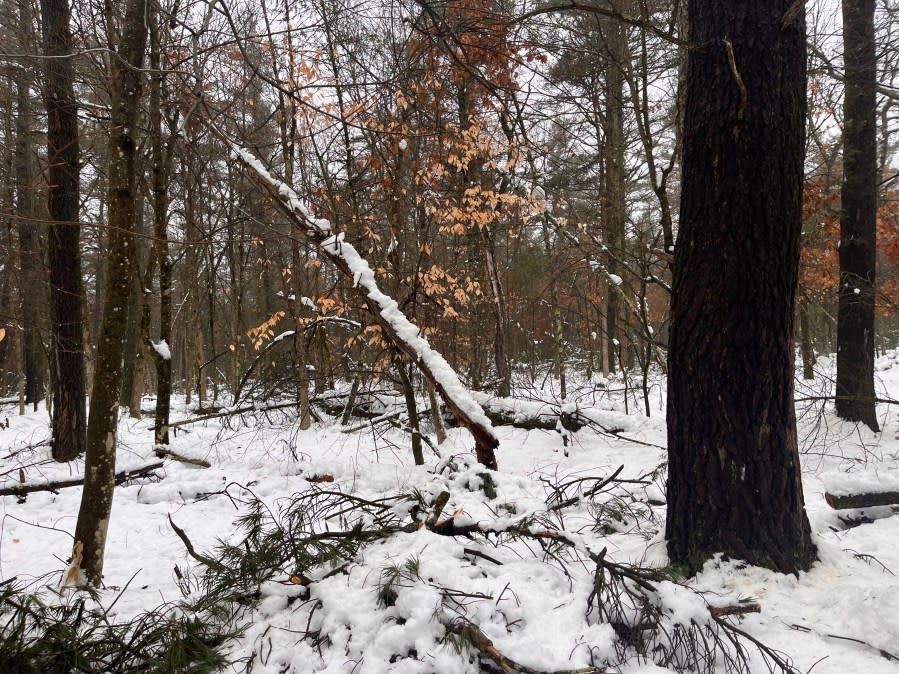
‘DUST TO DUST’
The lawsuit was filed earlier this month. Marquez said the township will have several weeks to respond. The case could take several months, if not more than a year.
But the couple says they have people on their waitlist who may not have time to wait.
“There are people waiting who want this to be the way that they are buried, who maybe don’t have long time horizons, maybe they have late stage cancers,” Peter Quakenbush said. “Of we don’t do this then people will miss out on that opportunity.”
“That part is really sobering to me, but it’s true,” Annica Quakenbush said. “We have a number of people that I can think of specifically who are in the area and have been in contact with us since we first made our idea known, and … they ask frequently, ‘Any idea on the timeline?’ Because they have illnesses that will end in death sometime relatively soon and they very much want to be buried in this way. Their loved ones want them to be buried in this way. So we really hope that we can move through this process and offer that service to them.”
She said people who have added their names to the waitlist typically fall into one of two categories: They’re interested in the conservation and environmental aspect or they “are simply drawn to the aesthetic of being buried in a forest or visiting a loved one in the forest.” There are even people who want to be cremated who are interested in the project.
“They feel like it’s such a beautiful place to have a memorial and to invite loved ones to be as they’re grieving,” she said.
“The dust to dust concept is very widely held and valued,” Peter Quakenbush said. “And this is a simple way to do that.”
CARING FOR THE FOREST THROUGH DEATH
Peter Quakenbush says he has always valued nature and views the project is a way to help connect people with it.
“Peter is getting his Ph.D. in biology,” their attorney said. “He cares deeply about nature and is an expert in this field. He is committed to making sure that the forest is taken care of in the best possible way. This is not the Quakenbushes running in and deciding to do a weird project, they have studied this for years. They care deeply about it. Both of them have a commitment to nature preservation and they are going about this project in the best possible way.”
He recently spent time digging a “mock grave.” The process of digging the grave and filling it again took about four hours — though he did it while watching the couple’s 3-year-old.
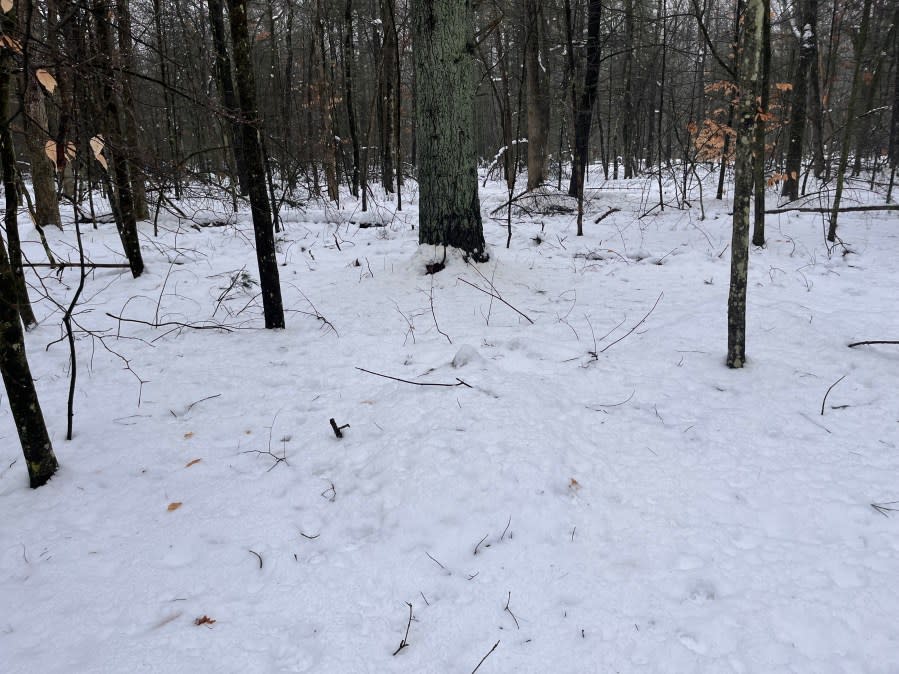
The couple explained they’ll be strategic about where the graves are placed so that they don’t hurt major roots of the property’s trees. The soil would also be dug by hand in layers, and would be returned in the right order.
“We love the simplicity of it, but also there’s the component of needing to be really careful where we put graves to create the least amount of disturbance as possible in the forest,” Annica Quakenbush said.
Gravestones can be marked by a native, engraved stone. The area has lots of glacial boulders, which will eventually be covered in lichens and moss. Trees can also be designated as living memorials.
The long-term hope is to continue to buy land as they sell plots so they can grow the conservatory. Money from the plots will go into a perpetual care endowment so the cemetery will continue to be cared for once it’s full.
“Essentially, the land can retire and be that nature preserve. So it’s a really good way to take care of the land in the long term,” Peter Quakenbush said.
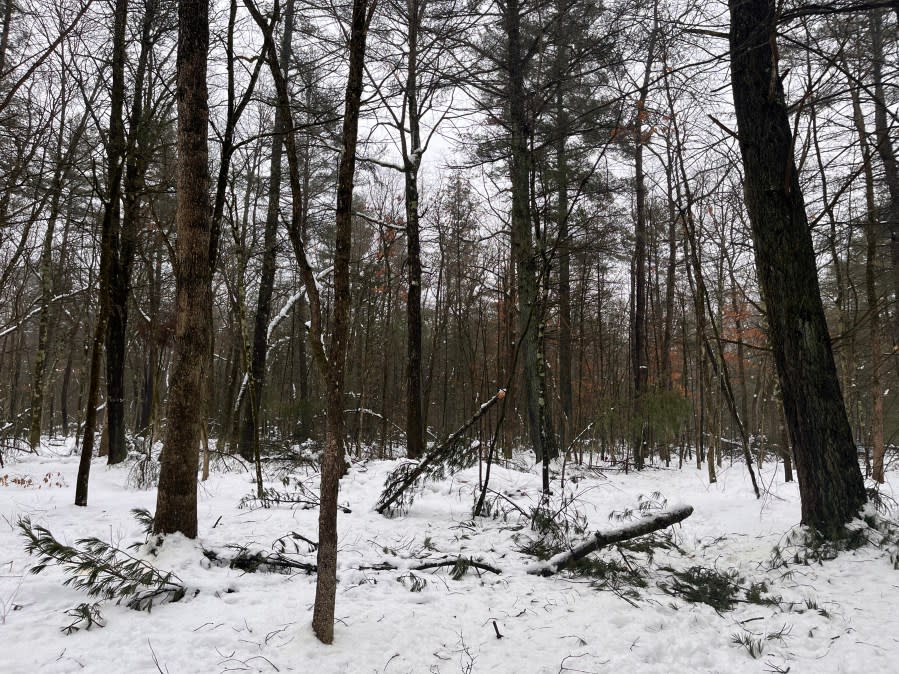
FROM BIRTH TO DEATH
The couple says green burials are often very intimate and there are lots of opportunities for loved ones to be involved in the process.
“That closeness to the process of death is really healing for the people that are grieving,” Annica Quakenbush said. “It’s something that is just really meaningful and can be a really beautiful way of celebrating the life that is lost.”
“And placing that in the context of nature, where we have the circles of life and life goes on, is a very wonderful place to put that,” her husband added.
As the couple works on a project surrounding death, Annica Quakenbush is applying her experiences working with new life. She has worked as a birthing doula for about seven years and has now been trained to be a death doula.
“There’s so much in common between birth work and death work,” she said. “They’re both these big transitional times for both the person being born or the person dying, but also the people around them.”
She said she feels passionate about supporting people through that transition — be it new life or death — and making sure they have the resources they need.
“Empowering people to think about their choices and make decisions based on good information, based on what’s right for them as an individual, is something I’m really passionate about too,” she said. “Informed consent in birth, informed consent in death plans and death wishes for people that are anticipating death, but also for family members … those are all important things to me.”
She plans on working with families and people as they plan for burials and death. There are more choices than some may realize, even for funerals. She said many don’t realize that a home funeral is an option.
Death isn’t something our culture talks about, she said, and it makes many uncomfortable.
“It’s often a very painful experience when someone passes away and it’s something we don’t like to think about for ourselves,” she said. “However, we feel like we’re seeing that shift in our culture and that more people are talking about the importance of understanding the natural death process and taking ownership over their choices and knowing that they have choices.”
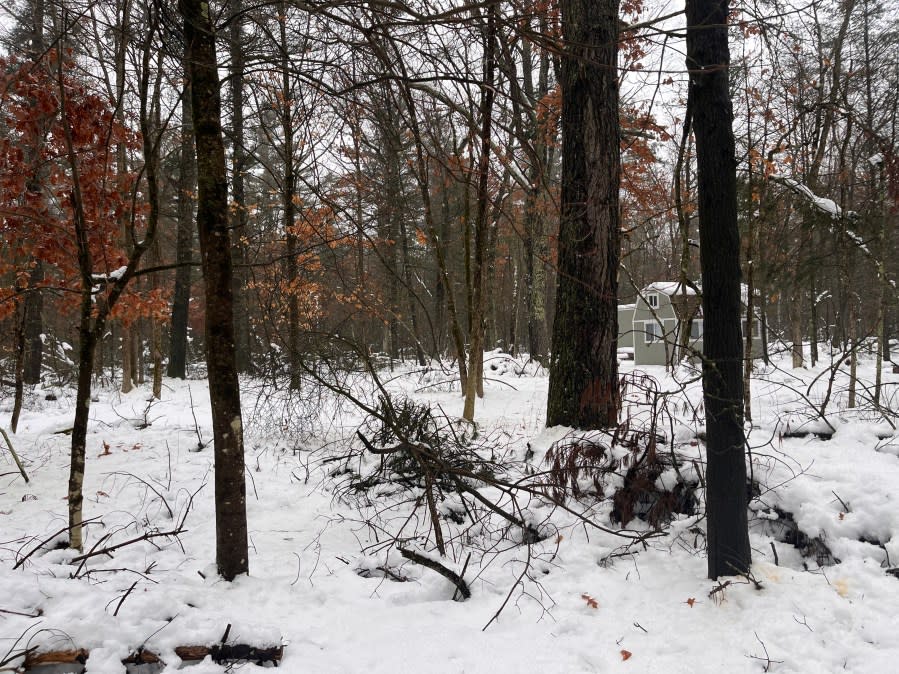
Making choices about what you want to happen to you have you die is empowering, she said.
“It’s something that lowers, I think, the fear of death and … encourages us to confront the reality,” she said. “Anytime we’re opening our eyes and confronting the reality of something, it takes some of the fear away.”
The Quakenbushes say they don’t expect to fully stop people from fearing death, but rather want to help people see it as a normal part of life.
“It’s something that every single one of us experiences,” Annica Quakenbush said. “The more we can integrate it into our understanding of what life is, the more supported we can feel going through the process, the more we know how to support each other in grief. And those are things that I believe could change the world. If we felt that way about life and death, I think there’s just a real inherent natural beauty to that.”
— Correction: A previous version of this article incorrectly said the couple already has a certification from the Green Burial Council and an easement from a conservation group. We regret the error, which has been fixed.
For the latest news, weather, sports, and streaming video, head to WOODTV.com.

